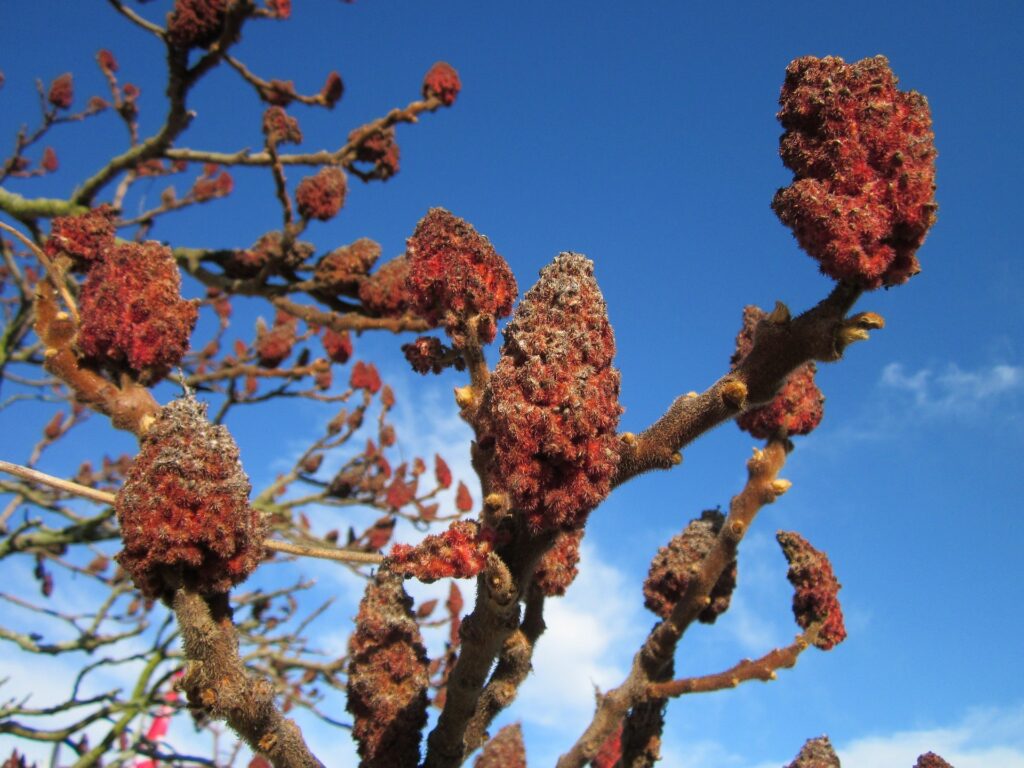Sumac or Zumaque, a flowering plant belonging to the genus Rhus, stands as a botanical treasure with a rich history and a myriad of applications. With over 35 different species distributed across temperate and subtropical regions, sumac has become an integral part of various cultures, celebrated for its distinctive features, culinary uses, and potential medicinal properties.
Botanical Characteristics: One of the defining features of sumac is its compound leaves, arranged along a central stalk, which often take on brilliant hues during the fall. These pinnately compound leaves contribute to the visual appeal of sumac, making it not only a functional plant but also a beautiful addition to landscapes.
The Berries: Sumac is perhaps best known for its clusters of berries. While the most common color is a vibrant red, some species produce white or greenish berries. It is crucial to note that not all sumac berries are edible, with poison sumac being an exception. Poison sumac can cause skin irritation and should be avoided.

Culinary Uses: One of the most celebrated aspects of sumac is its role in culinary traditions, particularly in Middle Eastern cuisine. The berries are harvested, dried, and ground into a coarse powder, creating sumac spice. This spice imparts a tangy, lemony flavor to dishes, enhancing salads, meats, and rice-based recipes. The use of sumac in gastronomy adds a unique dimension to the flavor palette, making it a sought-after ingredient for chefs and home cooks alike.
Medicinal Potential: Beyond its culinary applications, sumac has been historically utilized in traditional medicine. The plant has been associated with treating various ailments, including digestive issues and respiratory problems. While ongoing research aims to uncover the specific medicinal properties of sumac, caution should be exercised, and individuals are advised to consult healthcare professionals before incorporating it into their wellness routines.
Cultural Significance: Sumac holds cultural importance in diverse regions. In addition to its use as a spice and in traditional medicine, certain varieties of sumac have been employed for dyeing fabrics. The plant yields a spectrum of colors, ranging from yellow to red, contributing to the cultural and artistic heritage of communities that have integrated sumac into their daily lives.
Landscaping Appeal: The ornamental varieties of sumac have found a place in landscaping due to their adaptability to various soil conditions and vibrant foliage. Sumac’s aesthetic appeal extends beyond its practical uses, making it a popular choice for those seeking both beauty and functionality in their outdoor spaces.
To sum up, sumac, with its diverse species and multifaceted applications, stands as a botanical marvel that has woven itself into the fabric of human history. From enhancing culinary experiences to offering potential medicinal benefits, sumac continues to captivate and contribute to various aspects of human life. As research unfolds, the understanding of sumac’s potential applications may expand, further solidifying its status as a versatile and cherished plant in the botanical realm.



